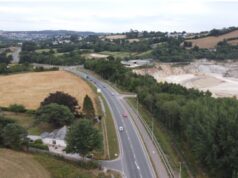By Steve Mooney
New Zealand has a well-recognised infrastructure deficit impacting transport, productivity, housing and the nation’s quality of life.
The most often quoted figure for the deficit, from the Infrastructure Commission, is that New Zealand needs to spend NZ$210 billion over the next 30 years as many of the public assets built in the 1950s and 1960s near the end of their lifecycles.
Funding to address that deficit is a challenge. It is a complex mix, and the current problems with New Zealand’s infrastructure funding and financing model are multi-faceted.
While local authorities hold a key role in the delivery of infrastructure projects, historic underinvestment and structural limits on local authority funding and financing have restricted the ability of councils to meet rapidly increasing demands for infrastructure.
In response, the Government has announced several initiatives to address the issue of infrastructure funding.
Local Government Minister Simeon Brown announced in November last year that all regions had been invited to submit regional proposals and work with central Government to agree to a 30-year vision and a 10-year plan, demonstrating how any deal would unlock productivity, connectivity and housing.
The first Regional Deal is expected to be finalized by December 2025, with three Regional Deals established by October 2026.
Regional deals could potentially give New Zealand regions a chance to get out of a productivity slump, but these deals must recognise and celebrate regional differences or risk failure.
One of the most talked about deals overseas has been the Greater Manchester City deal from 2011 when ten local authorities banded together, securing better access to central government and European Union funding in addition to an “earn-back” fund for spending on infrastructure as well as housing, emissions reduction and skills and training deals.
In another UK example, local government authorities in Doncaster created a compelling business case on the wider economic benefits of a major road infrastructure project and secured a guarantee of £34 million from the private sector, so that only £18 million was needed from government.
In Southeast Queensland, local authorities had taken note of what had occurred in Manchester and lobbied hard for a deal which saw all three tiers of Australian government – local, state and federal – commit to a A$1.8 billion infrastructure package for the region, which was not tied to any one project.
In New Zealand, the Government has created a pathway for those in the private sector to make unsolicited bids to build infrastructure. The new avenue will enable market participants to negotiate directly with the Government if they come up with an idea that aligns with its objectives and is good value for money.
New Zealand has never experienced a successful market-led proposal, but the current Government says it has “no monopoly on good ideas” and welcomes private sector initiatives.
Applicants will be able to submit their bids to National Infrastructure Funding and Financing Limited, formerly Crown Infrastructure Partners, with Private-sector parties potentially proposing to make their money by charging users for the infrastructure.
This is a welcome development, but I anticipate that this will benefit Central Government Infrastructure Projects more so than Local Councils.
Most governments understand that appropriate infrastructure investment is critical to our economic future but seem to not be addressing the investment in the people who are needed to construct, maintain and manage them. This disconnect must also be addressed by governments, as one cannot exist without the other.
There are a wide range of risks if we fail to invest in the development of a skilled asset management profession. Not doing so increases the risk that public funds are not spent effectively, and that our infrastructure underperforms in its key role in the economy and delivering services to the community.
We also risk being under prepared for a changing world that is witnessing complex and challenging environmental and social demands unfold.
To help manage these risks, the government should also make a concerted effort to fund educational programs that raise capacity and capability of the asset management profession and make a commitment to an industry wide uplift of skills in Asset Management.














